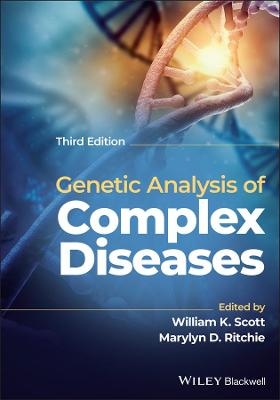
Genetic Medicine
Johns Hopkins University Press (Verlag)
978-0-8018-6130-7 (ISBN)
- Titel ist leider vergriffen;
keine Neuauflage - Artikel merken
"Genetics," writes Barton Childs, M.D.,"is a biological science that, unlike biochemistry and physiology, developed and prospered outside medicine, and, until recent decades, overlapped with the latter only occasionally in regard to rare diseases. But now, ...molecular genetics is exposing medicine to genetic concepts that provide new ways to think about disease, its causes and its pathogenesis. So we have no choice but to examine how the ideas of genetics are influencing medical thinking today, how they should do so, and how we might use them to make medical education more relevant to what is happening in communities no less than in laboratories." In Genetic Medicine: A Logic of Disease, Dr. Barton Childs evaluates how knowledge of the contributions to disease of both genes and experiences provides a rational basis for medical thinking. This "genetic" medicine, he explains, should help the physician to use the result of the laboratory to perceive the uniqueness of the patient as well as that of the family and the cultural conditions in which the patient's condition was engendered. He thus provides a conceptual framework within which to teach and practice a humane medicine.
Genetic Medicine: A Logic of Disease is intended for readers interested in how medicine is--and how it should be--conceptualized, practiced, and taught. Medical educators, academic and practicing geneticists, and medical students will find this book of value. "The author gives us new ways of looking at old medical disorders and offers plenty of food for thought to stimulate changes in current thinking."--Virginia E. Kimonis, Teaching and Learning in Medicine "Barton Childs' book is erudite and informative"--Rodney Harris, Human Genetics "This book is highly recommended for a wide variety of audiences in addition to physicians and medical students: ethicists, anthropologists, social workers, nurses, and other members of the health profession. Hospital administrators, insurance personnel, and lawyers could also benefit, particulary in this day of managed care. Members of curriculum committees of medical schools and public health schools could also benefit. Fortunately, some of Childs's concepts are being applied to medical teaching already, but I know of no better synthesis in one book."--Perspectives in Biology and Medicine
Barton Childs, M.D., is professor emeritus of pediatrics and biology at the Johns Hopkins University School of Medicine.
Chapter 1. Introduction
Part I. MEDICAL THINKING
Chapter 2. Inborn Errors and Chemical Individuality
Chapter 3. The Transition from Oslerian to Garrodian Medicine
Chapter 4. Individuality and Causes
Chapter 5. Definitions of Disease
Part II. A LOGIC OF DISEASE
Chapter 6. Biology and Medicine: Contrasts and Convergences
Chapter 7. A Synthesis
Part III. SPECIES IDENTITY
Chapter 8. Lessons from Phylogeny
Part IV. ADAPTIVE FLEXIBILITY: HOMEOSTASIS AND DEVELOPMENT
Chapter 9. Physiological Homeostasis: The Homeostasis of the Moment
Chapter 10. Genetic Homeostasis: The Past
Chapter 11. Developmental Homeostasis: The Lifetime
Chapter 12. Sociocultural Homeostasis
Chapter 13. Homeostatic Interactions
Part V. DESCENT WITH MODIFICATION: GENETIC VARIATION
Chapter 14. What is a Gene?
Chapter 15. The Paths of Gene Action
Chapter 16. Whatever Is, Is Variable
Chapter 17. The Semantics of Genetics
Chapter 18. Classification of Disease
Part VI. REPRODUCTION, FREQUENCY, AND CONTINUITY
Chapter 19. The Diploid State
Chapter 20. Gene Frequency
Chapter 21. Heterogeneity
Chapter 22. Unity and Continuity of Disease
Chapter 23. Heritability
Chapter 24. Infections
Part VII. AN ANALYSIS OF DISEASE IN THREE TIME FRAMES
Chapter 25. The Moment: Type I Diabetes
Chapter 26. The Lifetime
Chapter 27. Biological and Social History, and a Vision of Disease in Three Time Frames
Part VIII. THE LOGIC AND MODERN MEDICINE
Chapter 28. The Human Genome Project
Chapter 29. The Medical-Genetic Synthesis and Society
Chapter 30. A Basis for Medical Education
| Erscheint lt. Verlag | 6.11.1999 |
|---|---|
| Zusatzinfo | 11 b&w illus. |
| Verlagsort | Baltimore, MD |
| Sprache | englisch |
| Maße | 152 x 229 mm |
| Gewicht | 612 g |
| Themenwelt | Studium ► 2. Studienabschnitt (Klinik) ► Humangenetik |
| ISBN-10 | 0-8018-6130-6 / 0801861306 |
| ISBN-13 | 978-0-8018-6130-7 / 9780801861307 |
| Zustand | Neuware |
| Haben Sie eine Frage zum Produkt? |
aus dem Bereich


